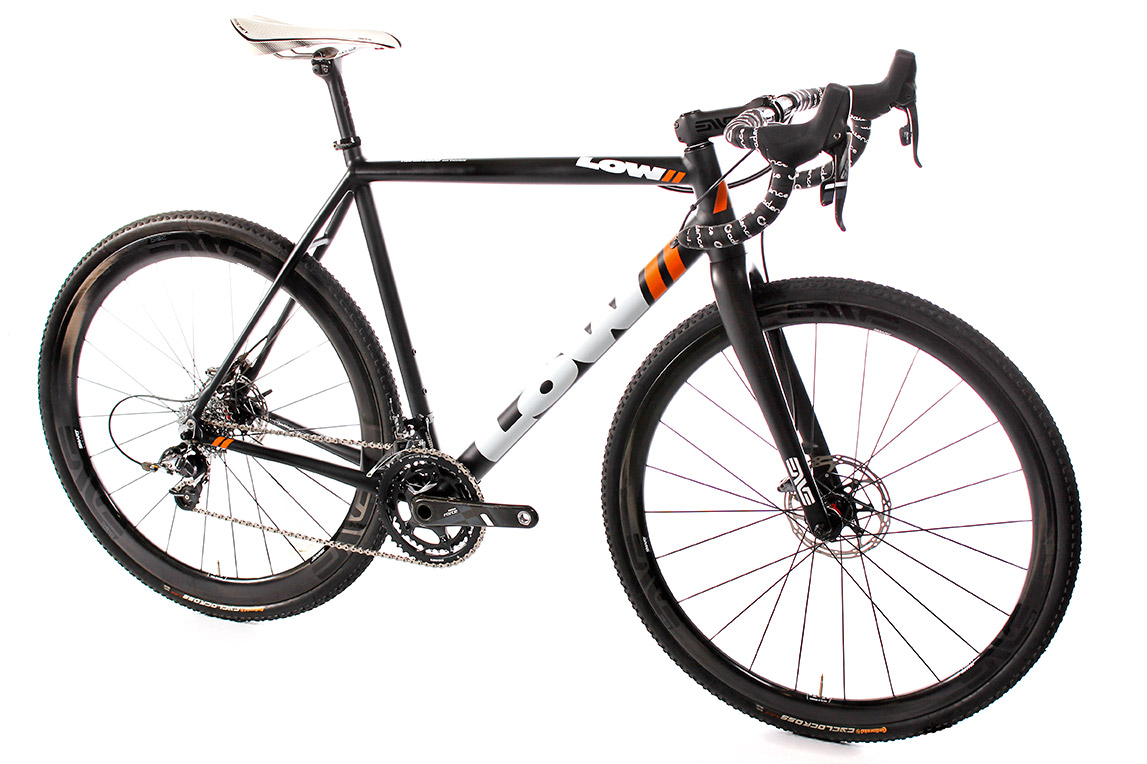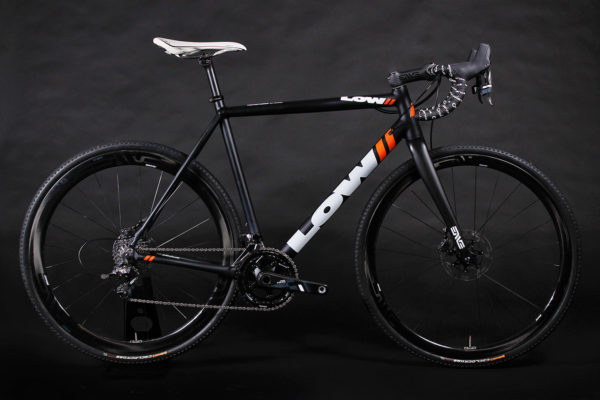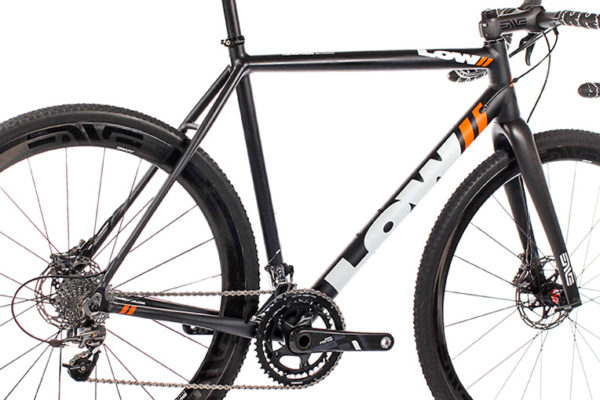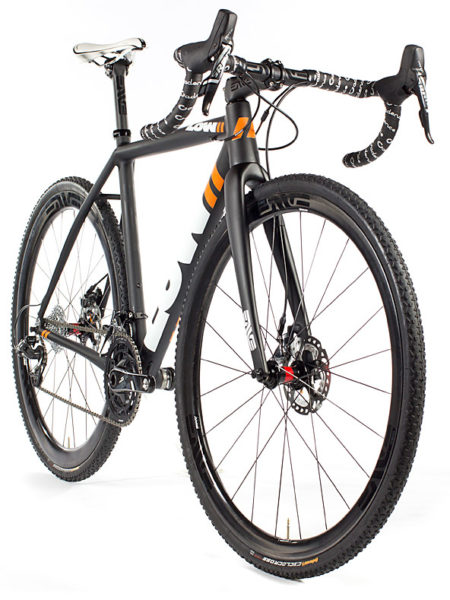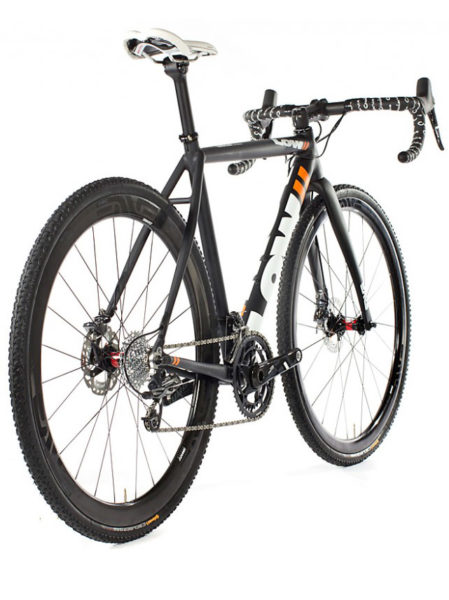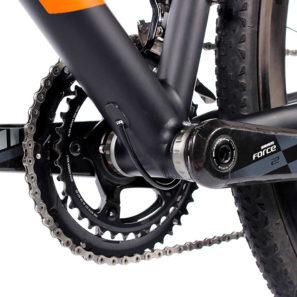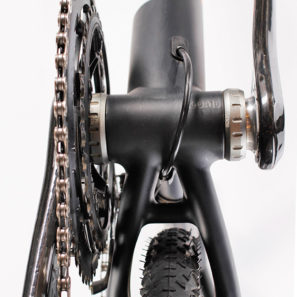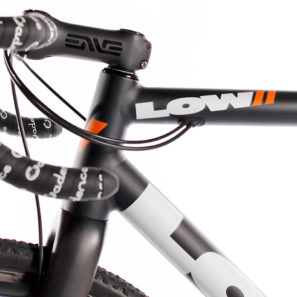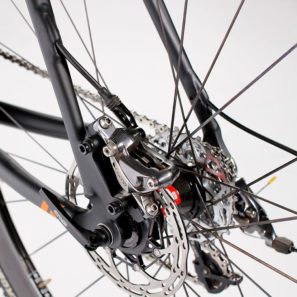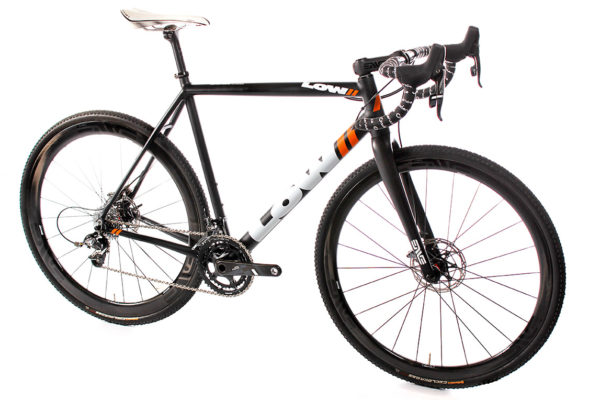Know for straight forward performance aluminum frames built by hand in their San Francisco workshop, Andrew Low and his team at Low Bicycles have been trying to spark a resurgence of domestic alloy bike manufacturing. Low’s latest addition to the lineup is the new MKII CX bike. A direct descendant of the first generation (MKI) CX prototype that has seen racing over the last 2 years and that we saw back at NAHBS this past March, the MKII makes its way into production in time to start racing. Low has ironed out the development kinks and is ready to get you lined up to start racing this fall. Get a closer look at the new bike after the break, and see why Low’s US-made 7005 frame will make a perfect companion for your next cyclocross campaign…
Like crit racing, cyclocross has long been a discipline that really made sense to race on aluminum bikes. The short duration, high intensity event favors stiff power transfer, and frequent crashing has tended to not be nearly as hard on alloy as it can be on carbon. But aluminum bikes were often plagued with a brutal ride that was hard to tolerate even for the 45 minutes most of us end up racing (OK, 60 if you are faster than me.)
But Low’s alloy bikes have begun to build a reputation for a more comfortable ride, and the MKII CX is no exception, having been fine tuned through two race seasons of prototyping. Low is said to achieve this balanced ride through the use of a proprietary butted tubeset, some of which they shape by hand in house. That shaping goes from flattening the toptube for improved shouldering to curved and flattened seatstays that build in a bit of controlled flex. Drivetrain and handling are said to remain solid through the use of Low’s stiff ‘Back-Bone’ from the headtube to the chainstays to limit torsion.
The MKII is a disc brake only frame and comes paired with a Enve Disc CX fork. The frame gets full internal cable routing all the way back to the chainstays for a simple and mud free setup, with the bottom pull front derailleur routed outside and around to a cable stop just behind the bottom bracket. It also gets a chainstay bridge there, so it may not be best suited for the muddiest of cross courses. It does stick with a threaded bottom bracket, so at least that will be easy swap out if it gets thrashed mid way through a wet and muddy race season. Tire clearance is said to be good for up to 40mm tires with a 425mm long chainstay.
The MKII CX is available now direct from Low for $2450 for the frameset, including the Enve fork. The bike comes standard only in this signature matte black finish with white/orange graphics, and in six sizes (49, 52, 54, 56, 58 & 60cm.)
They say that stock is limited, so no time like the present if you are looking to get prepped for cross. Otherwise, if you miss out on the first batch of bikes they won’t be available until the end of October with the season in full swing. Custom geometry and other finishes are also available but won’t have you ready for racing this fall.
